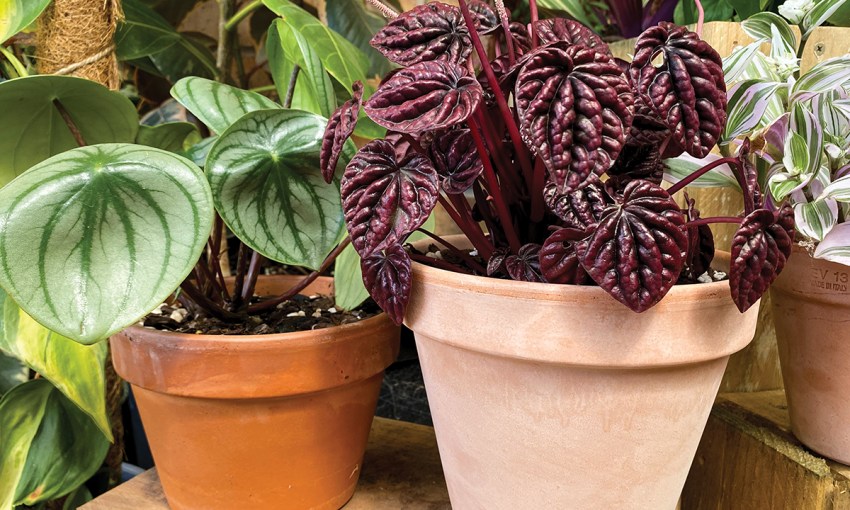Have you been bitten by the house plant bug? Don’t worry, you’re not alone, and with the flood of options so readily available to us, we often bring home plants that aren’t as easy to look after as they appear.
Tips and tricks for indoor plant perfection
Apart from the number one rule to leave your plants in their plastic nursery pots, there are some tips and tricks to try if you happen to find yourself with an unexpectedly difficult or temperamental house plant.
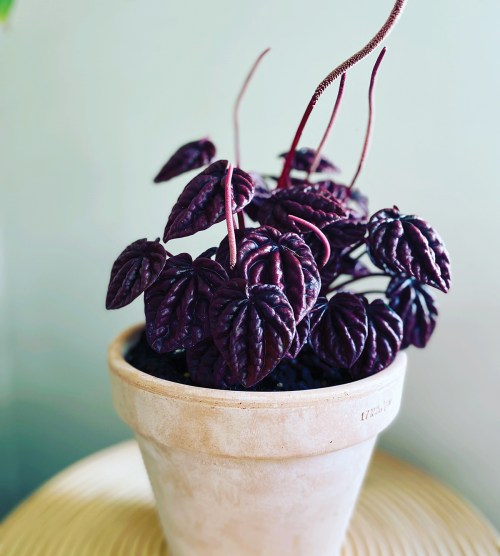
Plants that rot easily
One particular genus that seems to catch people out is the peperomia family. This is a large and varied genus with many being very succulent-like, however there are plenty that are a lot more sensitive and have incredibly fine root systems. These are the ones that seem to be irresistible and inevitably end up in your home! However, their fine, hair-like roots can suffer very quickly from staying too wet for too long.
Some common peperomia that catch people unawares are the range of beautiful ripple peperomia (P. caperata), the stunning watermelon peperomia (P. argyreia) and the cute little string of turtles (P. prostrata).
These few unique and interesting plants can seemingly collapse overnight, leaving you scratching your head and wondering what you did wrong.
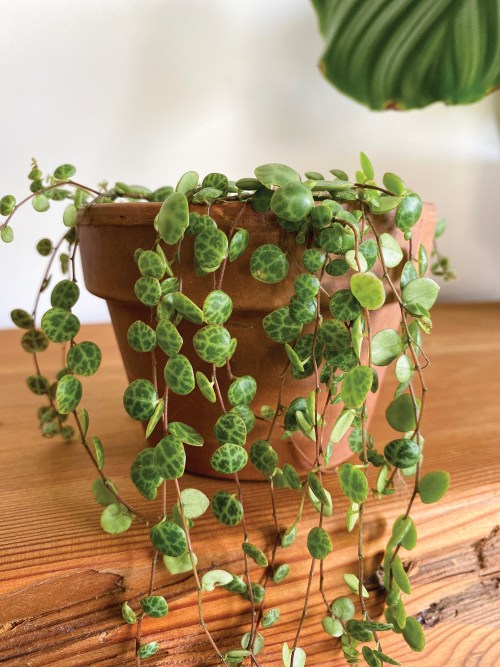
Another plant that will also benefit from the following suggestions is the colourful and interesting Oxalis triangularis. A close cousin to the ever-annoying soursob weeds, this highly sought-after ornamental oxalis can also be tricky for some people, including myself when I first acquired one.
On my second attempt, I bought big and popped it straight into a terracotta pot with a nice chunky mix. It’s been super simple ever since, enjoying a drink only when it starts to droop, telling me it’s thirsty.
Try these tips
Grow directly in terracotta pots (yes, break the number one rule). This is a really easy way to help the potting mix or growing medium dry out really fast.
Add some orchid bark, perlite and horticulture charcoal to your potting mix. This will ensure there are more air pockets around the roots and will allow it to dry quicker.
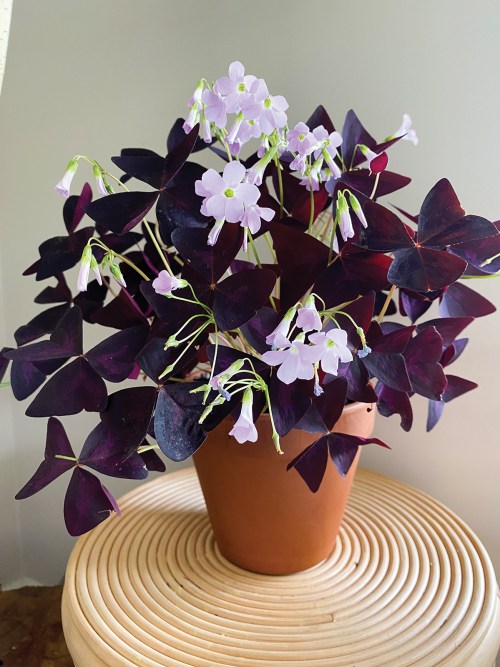
Don’t expect these types of plants to tolerate medium to low light. Ensure they are placed closer to windows and receive bright but indirect light.
Try giving your plants some time outside on warmer days. A protected patio or deck area that provides full but bright shade is a perfect growing environment. The warmer outside temperatures will speed up growth.
Buy big! If you can afford the extra few dollars, buy the next size up or something a little more mature. This will ensure it has an established, healthy root system and is less likely to struggle.
“Why are the ends of my leaves black?”
Another common problem with two plants in particular, is the black tips issue. Anthuriums and spathiphyllum (peace lilies) are classic hosts of this problem.
It seems that no matter what you try – more water, less water, change of soil or location – these two plants can still frustrate you with the black tips on the leaves. The solution is easy: grow them in water.
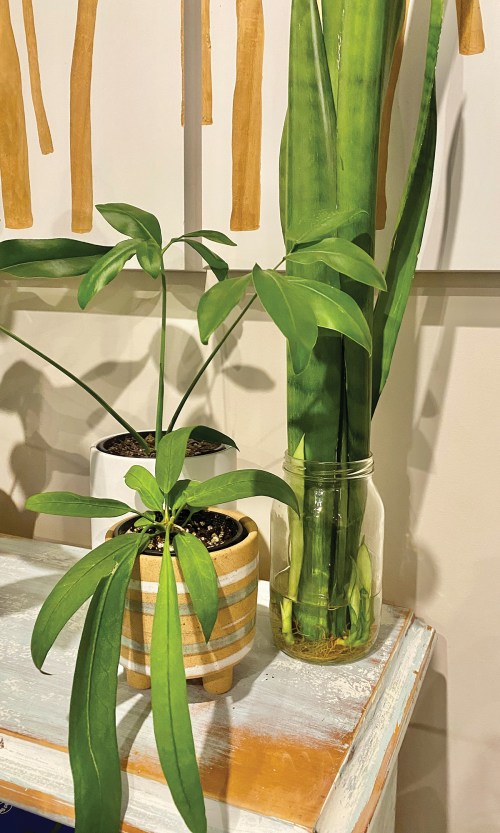
As strange as it might seem, taking plants out of soil and growing in straight water is the answer to this problem. It removes the issue of watering too much or not enough and allows the plant to grow healthy water roots. Both spathiphyllum and anthurium will flourish in these conditions.
There are basic rules to follow but are so simple you really can’t go wrong.
Wash as much soil off the roots as possible, and repeat this on a weekly basis until all the soil is gone. You can leave the roots soaking in a bucket for a little while to help with this process and a soft toothbrush will also help to remove stubborn potting mix and bark.
Use a glass jar or vase that will keep your plant upright and stable. Fill to just underneath the area where the stems join the roots. Don’t fill any higher or the base of the stems will rot.
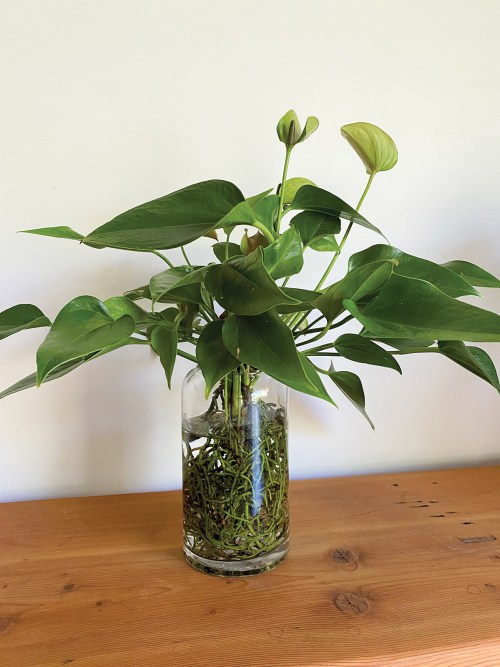
Mix up your favourite liquid fertiliser in a bucket and then add a small amount of this to your water.
Change the water weekly or fortnightly. This keeps it fresh, re-oxygenated and clear. It’s as simple as that. Once you have the plant transitioned and growing you will wonder why you didn’t do it sooner!
Have a go at something different
Interested in trying some other things in water? Just about anything can live in a hydro set up but a couple of really interesting plants to have a go with are some sansevieria cuttings and sweet potatoes.
Sansevieria, or snake plant as some call it, will grow faster in water than in soil, which seems odd. However, it’s true and a fun plant to watch transform from a simple cutting to a thriving growing plant with a bunch of new shoots and water roots.
Always remember to dry the end of the cutting out for two to three weeks before placing it in the water.
A whole sweet potato, perched in a glass or jar of water so that one end is touching the water all the time might seem to do nothing for a few weeks, but before you know it, you will see some amazing roots and long leafy vines sprouting from all over the place.
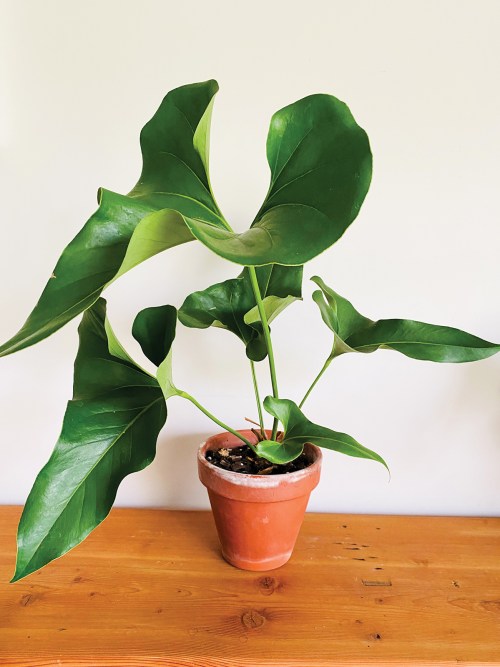
Use some toothpicks to help balance the potato in the jar if it’s a bit wobbly.
While collecting and owning house plants is a wonderful addiction to have, it’s also important to remember that there’s no such thing as an indoor plant. Expecting perfection in a non-perfect environment is unachievable.
We need to accept a few blemishes and learn to read our plants and what they are telling us by how they look and feel.
The two most important things to always consider are: How are you watering the plant? And is it receiving enough light?
Get these two things right and, armed with all these useful tips and tricks, you can feel more confident about your future plant purchases and even have a go at some of the trickier ones too.
This article first appeared in the Summer 2021 issue of SALIFE Gardens and Outdoor Living magazine.



